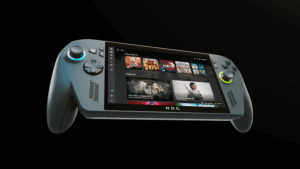
The GX1 is an important camera for several reasons. It represents some of Panasonic’s best work on micro four thirds (MFT) technology for the past three plus years, and it bridges the gap between the company’s other increasingly beginner-friendly MFT cameras and more powerful SLRs.
The GX1 is an attempt to retain users who prefer more advanced features and controls, users who are disappointed with recent MFT Lumixes, and this little camera might just do the trick.
Hardware, design, interface, controls
It’s clear from first glance that the GX1 is meant to appeal to a more serious crowd. There are no fancy colour options, and comes only in black or silver. You won’t find any of the GF and G series’ smooth curves here; the GX1 is hard, utilitarian and of a better quality build.
The 16-megapixel camera is light, yet feels solid. The controls are placed intuitively and you won’t have to stretch very far to reach most of the settings.
The pop-up flash is raised high enough so that your lens won’t cast a shadow when used. Like all built-in flash, it won’t be very powerful, but should be sufficient for casual shots.
As a camera aimed at more advanced users, the GX1 has a variety of buttons and dials to let users control shots to their hearts’ content. The dials are sturdy and well-built, and are stiff enough so that you won’t accidentally change shooting modes.
When in manual mode, pushing the dial above your right thumb like a button switches the control between shutter speed and aperture. It’s a nice innovative feature that removes the need for two dials.

There’s also Panasonic’s signature “Intelligent Auto” (iA) mode, which now occupies a button all by itself. It’s a great design touch. Imagine an opportunity for a great photo passing by in front of you, and you have no time to twiddle with the dials. Just tap the iA button, let the camera choose its own settings, and snap away.
The 3-inch touch screen interface picks up where the buttons fall short. It’s not the most intuitive of interfaces, and the screen is not very sensitive, but most of the settings fall into the set-them-and-forget-them category, so it’s not that big a deal.
Unless you shell out for an electronic viewfinder, you’ll be doing your shooting through the screen. Pressing the “Disp” button allows you to choose display options, which range from nothing but the scene in front of you to a full range of information around the border.
If the sun is too bright, it will be a struggle trying to frame your shot, as the screen will be barely viewable. Conversely, if it’s too dark and you have not memorised the button layout on the GX1, it will be difficult to make out the buttons for the menu, ISO, white balance, drive mode and autofocus mode as the text is silver on silver buttons.
ISO is disappointing, but that’s something you should already expect for a micro four thirds sensor. Although there is a noticeable improvement from previous G series models, going above ISO 800 is definitely not recommended if you want your shots to stay clean.
In general, the GX1 handles great for a camera in its category. Autofocus performance is quick and reliable, and the image processing engine keeps things snappy, from almost-instant startup to the virtually zero lag time between shots.
Lens and accessories

The bundled 14-42mm F3.5-5.6 is versatile enough for most situations, although the images it produces are not exactly tack-sharp.
The lens is also very compact, made possible in part by the innovative way it zooms. Instead of physically turning the lens, two small levers are built on the side – one for zoom and one for focus.
There is also a silent motor built-in to help you zoom and focus smoothly without so much as a scratching sound. This is important for video, as the mic will be very close to the lens and will pick up the smallest amount of noise.
As mentioned, there’s no electronic viewfinder bundled with the camera, and you’ll have to shell out another couple of hundred bucks for one. Hardcore shooters will turn their noses up at this, but framing your shot with the screen isn’t so bad once you get used to it.
The bigger problem is how you can’t use the external electronic viewfinder if you also want to use an external flash at the same time, because there’s only one hotshoe!
Image quality
If there is a good amount of ambient lighting, the GX1 takes great photos. Colours look accurate and details look suitably crisp.
Low-light results are a little mixed though. If you’re going for a grainy feel, by all means jack the ISO up. But I would suggest getting a lens with a larger max aperture or lowering the shutter speed for the best results. An additional lens will, however, add on to the cost of a rather expensive camera.
Here are some sample shots. (Click on the photos for full resolution.)
Verdict
The GX1 is a fine camera that inherits some of the best qualities of its G-series predecessors. It handles well and produces good-quality images, all in a package that’s small enough to slip into your jacket pocket.
Having said that, the GX1 faces stiff competition from the likes of Nikon, Sony and Olympus, as each brings their own unique qualities to the table. For instance, the Nikon V1 has a much higher burst rate, while the Sony NEX series comes with larger sensors.
At a recommended retail price of S$1,299, the GX1 is also slightly on the pricey side. If you come across a good deal for the GX1, it won’t be a bad buy, but at the recommended retail price, it’s worth taking a second look at the competition.
And of course, let’s not forget the mid-range DSLRs we can buy with the amount of money these compact system cameras are demanding.








